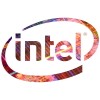- Qualcomm Launches Snapdragon 4 Gen 2 Mobile Platform
- AMD Launches Ryzen PRO 7000 Series Mobile & Desktop Platform
- Intel Launches Sleek Single-Slot Arc Pro A60 Workstation Graphics Card
- NVIDIA Announces Latest Ada Lovelace Additions: GeForce RTX 4060 Ti & RTX 4060
- Maxon Redshift With AMD Radeon GPU Rendering Support Now Available
Content and news by Rob Williams

Rob's Recent Content
NVIDIA Launches 790i Chipset & 9800 GX2 Graphics Card
NVIDIA kicked off two brand-new releases today, both of which we’ll take our own look at in the near-future. The 790i chipset is a variant of their 780i offering, but is tweaked to cater to the enthusiast in all regards. It’s the first NVIDIA chipset to offer support for 1600FSB processors and also DDR3-2000 memory. Now that’s high-end.
Also launched in the 9800 GX2, NVIDIA’s “Dual-GPU” solution on a single card. Although not a truly new architecture, the GX2 essentially throws two 8800GTS 512 cards into a single GPU, and is priced right around that idea, at $600.
Our friends at HotHardware have taken a look at both of the new products and can’t help but be left very impressed. The 790i board offers incredible performance and a great feature-set, while the 9800 GX2 outperforms the HD 3870 X2 by a rather sizable margin. Though the 9800 GX2 costs $150 more than the SRP for the HD 3870 X2, it’s looking like it’s a worthy investment if you want the absolutely best card available on the market.

|
As for the GeForce 9800 GX2, it is clearly the most powerful single graphics adapter currently available. In all of our in-game benchmarks, the GeForce 9800 GX2 outpaced every other single graphics card configuration including the Radeon HD 3870 X2. It was only in 3DMark06 that the Radeon had an advantage, but that didn’t translate into any benchmark wins with actual games at the high resolutions we tested.
Source: HotHardware
Published on March 18, 2008Intel Details Nehalem, Dunnington, Tukwila & Larrabee
At a press briefing, much more was revealed about the numerous upcoming technologies from Intel. In this article, we will be taking a look at Nehalem, Dunnington, Tukwila and Larrabee, along with a look at the new QuickPath Interconnect.
Published on March 17, 2008Apple Releases AirPort Express Mobile 802.11n Router
Networking gear doesn’t catch my eye too often, but the latest release from Apple is rather cool. The AirPort Express is a small device that plugs directly into a power socket, and doesn’t seem much larger than a regular cell phone charger. This is built for mobility, though, so it’s perfect for solo business trips or trips with numerous people.
The device doesn’t support a wired connection, but that’s unsurprising given its size. Instead, the goal is to provide wireless access, using 802.11n speeds, and not take up much room in the process. For a home environment, having a standard router would make more sense since wired connections tend to be far more stable, but this unit seems to be perfect if you require a mobile router.
In addition to supporting 10 simultaneous connections, it also acts as a print server, allowing you to connect one via USB. Setup should also prove quite easy, but it will require Mac OS X or Windows. After that point, anyone should be able to connect. The Airport Express retails for $99 and is available now.

|
Apple’s AirPort Utility software provides easy step-by-step instructions for setting up and configuring AirPort Express; and with its advanced security features, AirPort Express safeguards data on networked computers with support for Wi-Fi Protected Access (WPA/WPA2), 128-bit WEP encryption and a built-in firewall. Apple now includes 802.11n as standard in its entire line of AirPort base stations and Mac notebooks as well as iMac(R), Apple TV(R) and Time Capsule(TM).
Source: Apple AirPort Extreme
Published on March 17, 2008Star Wars Retrospective Part 1 Released
One of the most recognizable franchises on the planet is Star Wars, but you knew that. What you might not have known, however, was that since the early 80s, there have been countless games created around the series. Alright, maybe not “countless”, but after checking out the Wikipedia page dedicated to listing them all, you might just be impressed.
Last summer, GameTrailers released a series of retrospective videos surrounding the Final Fantasy series, which proved to be some of the best gaming-related videos I’ve seen in a while. Of course, it catered to the big FF fans, and their new Star Wars retrospective is pretty much the same.
Part one was launched on Saturday, and though I’m unsure of how many parts there will be in total, this is no doubt going to be a must-watch for any Star Wars fan, whether you are a modest fan or one with an incredible desire to know everything about the series. The first video takes a look at many titles that spanned across the Atari 2600 and arcades… and chances are, you didn’t know half of these games existed.

|
Despite the franchises choke hold on the children’s collectible market, a video game depicting the events from the trilogy wouldn’t arrive until 1982. Following the 1980 release of episode five, The Empire Strikes Back, with the meager resources of the 2600, Atari and Parker Brothers made a simple flight game that attempted to recreate the Rebel’s desperate escape from the Imperial invasion of the ice planet Hoth.
Source: GameTrailers
Published on March 17, 2008Our ASUS VW222 Review Has Been Updated
Last week, I posted that our ASUS VW222 monitor review would be updated, and it now has been with the help of an addendum at the end of the review.
It does turn out that our original review sample was defective, and the replacement model improves on a few aspects. However, even with these improvements, the monitor still doesn’t impress us. The color and gradients have been improved, but the very sub-par image quality remains, which we hold great weight to.
The fact that this monitor didn’t do too much to impress us is surprising, since it’s the first-ever ASUS product we’ve reviewed that we were not entirely pleased with. I have personally taken a look at two of their displays in the past and was pleased with their performance overall, but the VW222 didn’t deliver quality even comparable to those.
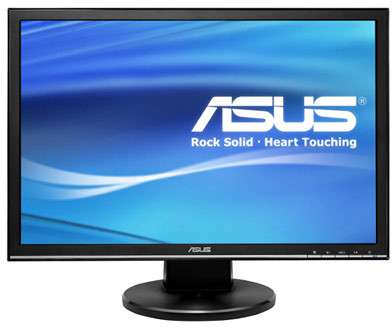
|
ASUS is a company that likes to excel at what they do, and they have taken heart to our considerations and criticism, so I have little doubt we will see more impressive displays from them soon. They have just released their first 24″ display, the MK241H, which offers fantastic specs, such as 450cd/m2, 3000:1 digital contrast ratio, 2ms GtG response time, a 1.3 megapixel webcam, HDMI and DVI-D support and on top of that, it boasts a 130% color gamut.
We are unsure of the panel used, and it’s difficult to guess given the low response time and high color gamut. We are touching base with ASUS to see if we can find out which is used, and possibly deliver a review in the weeks to come.
Source: ASUS VW222 Review
Published on March 17, 2008Game Consoles – Great Target for Credit Card Theft?
Credit card theft is not entirely uncommon, but it might be surprising when thinking about all of the places that your personal numbers are scattered about. There’s an on-going thread at Evil Avatar, where one member had his house broken into and had numerous items stolen (including his truck). Although of far less importance, it didn’t take him too long to realize his credit card was being used for purchase of online goods, thanks to his Xbox 360’s storing of his credit card information.
I am not sure how the entire process played out, but it seems like the Xbox 360 stores the credit card information without much security. His console was then used to purchase MS points – but if that was the case, wouldn’t it be easier to track down who purchased them? I can’t see too many thieves stealing a console just to purchase points for the original owner, although it could happen (out of spite, perhaps).
In the end, this story kind of woke me up to the reality that this kind of thing can happen to anyone, at any time. The fact that our credit card numbers are stored literally all over the place doesn’t help things. The thread goes into the issue further, though, as it seems Microsoft isn’t too helpful when it comes to having the credit card information removed. There are a billion different reasons to make sure your private information is kept safe, but this is a good one to add to the pile.
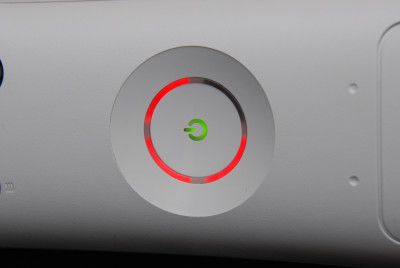
|
At this point a few things ran through my mind. First, was credit card fraud, which was bad. The other was that someone had my Xbox and was playing games I had never owned and downloading and buying content, including every single piece of downloadable content for NHL 08. Oh Canada.
Source: Evil Avatar
Published on March 17, 2008Grand Theft Auto: The Inside Story
There’s little arguing over the fact that the Grand Theft Auto series is one of the best of all time, for more than one reason. GTA III, GTA: Vice City and GTA: San Andreas all offered a huge world to explore, resulting in some amazing gameplay experiences. When you can have a lot of fun in a game without even focusing on the main storyline, it’s a superb title.
Edge have published part one of their rather sizable look inside the GTA series, with the help of an interview with Rockstar Games’ president Sam Houser. If you are fan of the series, you owe it to yourself to read through this article, as it very well could help you appreciate the series even more.
The entire article will consist of two parts, although the second hasn’t been posted (it should have been on Sun). The first is a whopper, though, at almost 6,000 words. Don’t let the word count scare you. Although I like the series, I wouldn’t call myself a huge fan, but I still thoroughly enjoyed the article.

|
“I think what was very special about the GTA III development process – and it’s something we still cling on to – was the fact that ideas would come into the game from anywhere and everywhere in the company; it was the son of so many great minds and opinions and attitudes and energies, and everybody was just throwing it in the pot.”
Source: Next-Generation, Via: CrunchGear
Published on March 17, 2008Intel to Launch First Mobile Quad-Core in Q3?
According to DigiTimes, mobile Quad-Cores are on their way, finally, but the initial batch are not going to be cheap. The new Quad-Core will come courtesy of Intel and debut as an Extreme part, similar to how new desktop models are debuted. If these rumors are fulfilled, the 2.53GHz part will cost $1,038 to system builders.
The chip will undoubtedly be targeted towards the serious enthusiast and also to those who need a mobile workstation. Besides carrying similar benefits of the 45nm desktop parts, the QX9300 will include 12MB of cache, have a TDP of 45W and a FSB of 1066MHz.
Despite this first offering being very expensive, it’s good to finally see them en route. According to Intel, mainstream mobile Quad-Core adoption will not occur until the latter-half of 2009, so we may not see more affordable parts until sometime until Q1/Q2 2009. I am most curious about the cooling-solution, since Quad-Cores on the desktop side can get very hot… which is bad news for a notebook.

|
With the market demand for top-level notebooks still below average, Intel expects the quad-core notebook CPUs will not become standard in the performance/mainstream notebook market until the second half of 2009, and therefore should not impact the desktop PC market, noted the sources.
Source: DigiTimes
Published on March 14, 2008EA Determined to Purchase Take-Two
Late last month, we posted about the desired takeover of Take-Two by EA, and since then, it hasn’t left the news. At all. I refused to post more about it since it’s rather boring, but now it’s beginning to get more interesting.
EA is getting impatient and we are coming down to a “take it or leave it” situation. For Take-Two’s shareholders, a take-over would be a good thing (especially on their pockets), but Take-Two themselves are remaining defiant. But EA is so determined, they have now gone straight-past Take-Two themselves and are targeting the shareholders directly.
EA’s deal is simple… to purchase all shares from the holders for $26 a pop. That figure was more impressive a few days ago, but now TTWO’s stock is almost at that point by itself, making the shareholders decision a little less easy. No one knows what will happen now, but EA is a powerful company are are unlikely to be defeated this easily. Either way, this is one show that’s getting fun to watch.

|
EA states that the offer represents a 64 percent premium over Take-Two stock price on February 15, but now the $26 bid sits at around 4.4 percent above the current price. The tender offer is scheduled to expire April 11, 2008, unless the tender offer is extended. The release of Take-Two’s largest title of 2008, Grand Theft Auto 4, will be hitting stores two weeks after the close of EA’s offer.
Source: DailyTech
Published on March 14, 2008Intel X48 Motherboards to Show Up This Week
According to industry-tracking website DigiTimes, Intel X48-equipped motherboards will soon be making their way into the retail channel. The first set of shipments are small, but full-throttle shipments should occur in the coming week.
X48 is an evolutionary upgrade over X48, with the prime difference being an upgrade in the systems FSB, which will sit at 1600MHz. Because of this, the upcoming QX9770 processor will be natively supported. That processor is mysterious, because we first previewed it way back in November. It’s not often that we release reviews so far in advance of a product launch, so it’s looking like the launch could be soon, thanks to the X48 launch.
We’ve yet to take a look at an X48 board, but have plans to soon. Our first review will be the ASUS P5E3 Premium board, which I expect to be a great performer and feature a splendid bundle (if previous generations are anything to go by). This board is likely to be included in the initial launch as well.

|
Although Intel has not yet officially announced its high-end X48 chipset, some first-tier motherboard makers started shipping boards in small volumes a few days ago. Mass shipping will start in the middle of March, according to sources in the channel. Asustek Computer and Gigabyte Technology both started shipping the motherboards this week.
Source: DigiTimes
Published on March 14, 2008Windows Vista SP1 Ships Next Week
Now that Windows 7 has a tentative launch-date, does Vista’s SP1 launch seem so meh now? No? Then you’ll be happy to know that the official launch for the new service-pack will occur next week. It will not become available through Windows built-in updater until April, however.
The latter method is the one I’ll take. Not that I don’t trust SP1, but I’m sure many others will be jumping on the bandwagon early and noticeable problems will become evident quick, swaying me even further from upgrading. If that’s not the case, then we can all feel more confident once it becomes available through Windows Update.
If you are at work or have some time to kill, you can read the lengthy page on what’s new in SP1 over at the official site.
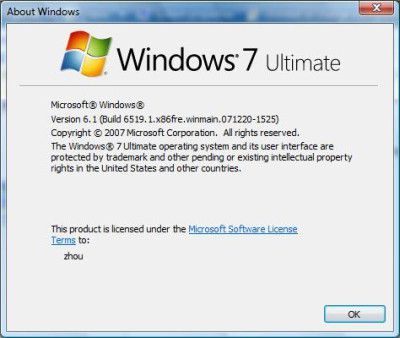
|
On March 18, Microsoft will post to its download site the manual installer for Vista SP1. This will be a big one, several hundred megabytes in size. On the Vista upgrade disk Microsoft sent me, it weighs in at over 400 MB. If you wait a month or so, Microsoft will deliver SP1 in April via Windows Update.
Source: TechBlog, Via: Download Squad
Published on March 14, 2008Intel’s D5400XS Should Hit E-Tailers In Coming Weeks
The other day, I posted about the lack of the Intel D5400XS motherboard on the market… the key piece in building a full Skulltrail system. Since that post, I’ve found out quite a bit, so much so that I’ll be posting a brief article on it next week. For now, I can delve into the basics.
The reason no D5400XS motherboards are available right now is because Intel have allocated their inventory to system builders, which left e-tailers with none. Apparently, there were far more Core 2 Extreme QX9775 processors than the motherboards themselves. D5400XS availabilty at your favorite e-tailer should come within a few weeks, according to Intel.

|
For those who don’t want to build their own Skulltrail rig, so far there are very few who are taking orders, but Maingear and Puget are there and waiting. You’d better have the cash and stomach for it, however, as their pre-configured systems both begin close to $9,000! Is building an affordable Skulltrail rig looking more tempting?
Published on March 14, 2008Windows 7 Launch Confirmed for 2010
We have posted news of Windows 7 in the past, but specific details of what to expect are somewhat scarce. One piece of info isn’t, though, the release date. It’s been speculated for a while that 2010 (or -late- 2009) would be the set date, and as it seems, the guess couldn’t have been much closer.
According to a Microsoft e-mail sent to Softpedia, the launch will be three years after the consumer version of Vista, which would put us in a timeline of around January 2010. It’s far too early to speculate whether the OS will drop during that month or not, but I’d be willing to guess it won’t. Vista also had high-hopes of being launched early, but it didn’t happen, so there’s no telling whether the same thing will happen with 7.
Although I’ve disliked Vista for the most part since its launch, I have it installed on my main Windows machine now, and have for a few weeks, and don’t have much issue, so I am impressed there. But, there are still obvious issues, that should have been taken care of pre-launch. So, I’m willing to bet Microsoft will try a bit harder to make sure 7 is easier to deal with at launch than Vista was. We will see…

|
Microsoft explained that it would deliver Windows 7 three years after the consumers launch of Vista. “We are currently in the planning stages for Windows 7 and development is scoped to three years from Windows Vista Consumer GA. The specific release date will be determined once the company meets its quality bar for release,” a Microsoft spokesperson revealed to Softpedia via email.
Source: Softpedia, Via: Engadget
Published on March 13, 2008Best Way to Deal With Game Piracy: Focus on Something Else
There’s been so much mention of piracy in the game industry lately, and really, it’s for good reason. However, there are a few people who look at the matter in an entirely different way than most, and it makes perfect sense to me. Rock, Paper, Shotgun has a quick article that discusses why it’s best to avoid piracy and focus on more important matters, such as making sure your game is the best it can be.
“Because the Pirates don’t count. They have no direct financial impact. There’s a second side of this too, however.”
Pirates don’t count, so why worry about them? The fact of life is that people will always be there to steal a game, but it’s more important to focus on games that people who legally buy the them, will buy. It’s become brutally obvious over the past few years that copy protection and other piracy-fighting measures have done nothing, and it’s amazing to me that game companies are still so clueless about this. I’ve said it a hundred times… these protections affect legal customers only. Sometimes, even the crackers themselves are not too inconvenienced. Some titles are now cracked before they are even released!
Stardock’s Brad Wardell has the same thoughts with his Windows-customization software, where he mentions that people who buy WindowsBlinds probably have a different taste in what they are looking for than the pirates who have the software. He raises this point because it seems to be the pirates who are deciding what kind of games are being made. I could go on for a while about this, but to save writing a novel, I recommend reading the article.
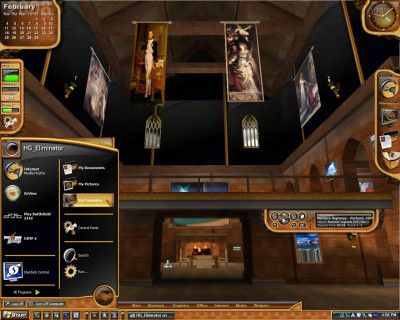
|
Websites earn money from people who have no interest in paying for the game. If there’s several million pirate-only FPS fans, they’ll swell the page-impression count too. If there’s four million people who want to read about Call of Duty 4, even if only 400,000 want to pay for it, a website will earn more money by writing about it, rather than trying to do something for the 400,000 people who actually want to read about Sins of the Solar Empire, even if every single one of them buy the game.
Source: Rock, Paper, Shotgun
Published on March 13, 2008Corsair Launches Low-Latency MacBook Memory
Here’s something you don’t see everyday. Corsair have just released some low-latency memory for MacBook’s and MacBook Pro’s, improving on stock and upgrade memory that can be had through Apple or most anywhere else. The press release assumes that Mac users don’t need to know what they are purchasing, because there is absolutely no mention of memory density or what makes these “low-latency”. Luckily, we can judge from the model code that this is a 4GB kit and has a CAS latency of 4.
The kit is available in a 2x2GB configuration, which makes the low-latency status even more important since with higher-density comes higher latency. Having a lower CAS latency will improve performance with certain application tasks, such as importing into Adobe Photoshop and most likely Aperture as well. Corsair claims the new kit will also improve Windows Vista via Bootcamp.
The kit is “immediately available” and retails for $159.99USD. That seems rather high considering a comparable G.Skill kit at NewEgg (identical specs) costs half as much. That kit is not Mac-specific, but architecturally, the modules are not any different than what’s found in a MacBook or MacBook Pro.
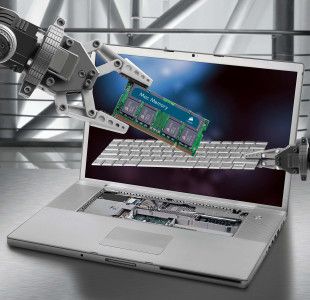
|
Fremont, CA, March 13, 2008 – Corsair http://www.corsair.com, a worldwide leader in high-performance computer and flash memory products, announced today the world’s first high performance memory modules made especially for the Mac. The new Corsair memory modules are the industry’s first low latency modules specifically tuned for the new MacBook and MacBook Pro laptop computers.
Published on March 13, 2008Blu-ray Players Up In Price With HD DVD Gone
It seems that the format war ending was not all good. Despite people believing prices for Blu-ray would become more reasonable, the opposite effect has occurred. Thanks to the fact that Blu-ray faces absolutely no competition in the high-definition market, why lower the prices? Seems like a simple concept.
According to Tom’s Hardware, while some Blu-ray players have hovered around $300 for the past few months, they are now back up around $400 thanks to the lack of competition. Two cases specifically show one player having gone from $358 to $440 in the past two weeks, while another jumped from $629 to $666. It’s not a great situation for those looking to join the Blu-ray fray. I do stand by my thoughts that the Playstation 3 is a good value for most anyone, however, thanks to the inclusion of Blu-ray playback.
Personally, I am not too concerned with the player prices, though, but rather the prices for the movies themselves. Sure, they are high-definition and offer a lot when compared to DVD, but I think prices will need to go down a bit before wide-spread adoption occurs. Some new releases are reasonably priced, but when most new releases retail for an average of $27… that’s a lot to stomach for the avid movie buyer.

|
By looking at these prices, it is pretty clear that the PS3 did in fact almost singlehandedly declare the winner of the format war. Another point worth noting is that all of these players will reach a certain level of obsolescence later this year, as soon as the new BD Profile is released.
Source: Tom’s Hardware
Published on March 13, 2008AMD’s B3 Opterons Finally En Route to Vendors
We’ve covered AMD Phenom’s LTB bug to some degree in the past, but hopefully from this point forward, not much more will need to be said. The reason? AMD has finally begun shipping the B3-revision processors which rids the rare, but nasty bug.
Though the first shipment of CPUs goes to vendors, appropriately so, they should become available in the retail channel within the month. In addition to the bug patch, the processors should become more readily available, and will also be seen in frequencies ranging from 1.8GHz to 2.4GHz. The higher-clocked Opterons are in queue to begin appearing this fall.
Are these new releases going to save Phenom? It’s hard to say, but it sure won’t hurt. Coupled with the fact that we will not see higher-clocked chips until later this year and also the fact that current Phenom’s don’t boast great overclocking headroom, the enthusiast market might be slow to pick up on them. Unless prices begin to go down of course. Then things could change entirely.

|
In addition to fixing the TLB race condition, AMD will finally increase the core frequency of the Opteron series on the B3 stepping. After the initial OEM orders are filled, channel vendors like Newegg and TigerDirect will carry the new Opterons in frequencies ranging from 1.8 GHz to 2.4 GHz. Vendor estimates put this e-tailer ship date in early April.
Source: DailyTech
Published on March 13, 2008Windows Home Server Broke Until Summer
Although Windows Vista wasn’t as widely accepted as Microsoft would have hoped, their Windows Home Server was anticipated all the way up to it’s release. We first took a look at the OS last spring and were pleased overall with what we saw. But, now that the OS is in the hands of many, vicious bugs are beginning to arise, and the one of main concern is ridiculous.
Thanks to an underlying issue which cannot be easily fixed, data corruption can occur, deeming the files useless. One experience related at DailyTech proves just how destructive the bug can be. Tim Slocum had well over 16,000 family photos on the machine, and all were corrupted within a few weeks of use. He decided to start over, deploying a basic OS install without the extras. Again, like the first time, the files were corrupted within a few days.
I am not sure of the details of the bug itself, but for an OS to be released with such a blatant and destructive bug is incredible. How it was not caught in QA is anyone’s guess, but this bug alone should cause anyone who was considering WHS to reconsider their purchase, at least for now. The bug should be ironed out this summer.

|
Now Microsoft says the problem is that the underpinnings of WHS are broken, and that a fix is required at a very low level. This will take a good deal of time to develop and validate, according to the WHS Team at Microsoft. The WHS Team hopes to release beta versions of a patch over following months, but states that June is the soonest a finished patch might appear.
Source: DailyTech
Published on March 12, 2008Intel D5400XS… Where Are You Hiding?
Just over a month ago, we posted our preview of Intel’s Skulltrail Dual Socket Extreme Desktop Platform, and it only took a few weeks before it was officially announced. That was a full 22 days ago. The problem that lingers is that it’s still incredibly difficult for anyone to purchase what they need to build a system.
The QX9775 processors began to show up on store shelves (TG shopping link) a few weeks ago, and as expected, the prices hover between $1,600 – $1,700. So what’s the problem, if the processors are readily available? The D5400XS motherboard, which is designed to pair up with these processors, is not readily available.
What a predicament. These ultra-high-end processors are there for the taking, but for some reason, the motherboard is MIA. What makes this situation more frustrating is the fact that there are no real substitutes for the D5400XS. You can use a standard 5400-based server board, but it will not be tweaked for enthusiast purposes, nor include support for SLI. To complicate things even further, ASUS’ Skulltrail solution, the Z7S WS, is also not available at this time. It at least would be a competent substitution, but even it lacks SLI support.
I’ve pinged both Intel and ASUS regarding status on their motherboards and will fill you guys in once I hear back. For those looking for the budget route, don’t forget about our “Building an affordable Skulltrail system” article, which offers solutions to build a similar kick-ass system for just under $3,000.

|
Consisting of two Extreme Quad-Core processors, Intel is looking to redefine what we know as “high-end”. Skulltrail is touted as being the “ultimate” enthusiast platform, offering SLI and Crossfire support, huge overclocking abilities and enough sheer power to make the competition weep.
Source: Techgage’s Intel Skulltrail Preview
Published on March 12, 2008Backing Up Outlook a Breeze With OutlookBackupPro
For whatever reason, backing up any e-mail client seems to be an arduous chore, and one that can end up in disaster if a simple step is missed. I suffered a bad experience with Outlook a few years back and learned my lesson quick. My current client, Mozilla Thunderbird, is far easier to back up, but is still prone to problems. Why these clients don’t offer robust backup options, I have no idea.
Download Squad have posted about a program that takes all of the hassle out of backing up Outlook, my making it a one-click affair (well, almost). Though the full version retails for $40, chances are good it is a worthy investment if you need a safe and secure way to back up all of your e-mails and contacts list.
The application does a bit more than simply backup, though. You also have the ability to set scheduled backups and can even automatically upload your backups to a remote server for safe-keeping, via FTP. So, if your NAS supports FTP, it could even be uploaded there. Sounds like a nifty, but incredibly useful application.

|
OutlookBackupPro will backup everything associated with your email account, including signature files, customized stationary, templates, OutNote notes, and all registry entries and system settings associated with Outlook. It will also backup your Outlook PST files. For those among us that can’t even remember our wedding anniversary, the program also offers set-and-forget automated backups.
Source: Download Squad
Published on March 12, 2008Older Entries
Newer Entries
Copyright © 2005-2025 Techgage Networks - All Rights Reserved.
About Us | Advertise | Terms & Conditions | Privacy Policy




